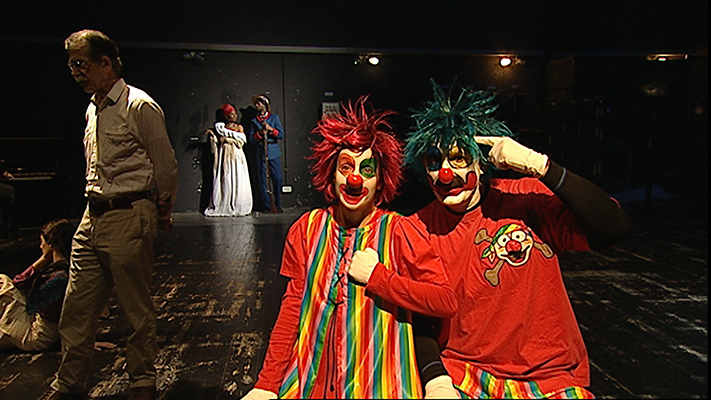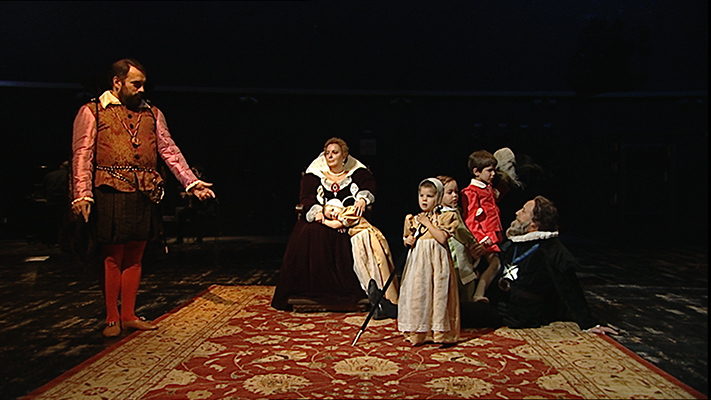Peter Friedl’s works assume the character of “conceptual acts” and “models,” with the purpose of exposing particular problems of representation at the intersection between aesthetics and politics. They are models of narration in which the “official” version of history-telling—and thus representation—breaks down. Friedl emphasizes the gaps and inadequacies that characterize the relation between representation and history.
In Bilbao Song, Friedl uses the genre of the Tableaux vivants to create a complex allegory. Tableaux vivants were originally used to popularize famous paintings, to bring these paintings as re-staged life-scenes to people who had no access to the original. Bilbao Song shows different historical paintings from various epochs as tableaux vivants. What they have in common is that they are all related to the Basque Country, a part of Spain marked by its struggle for independence, whose complex history encompasses the internal colonization of Europe, the so-called “minority-question,” as well as the world’s first aerial bombing of civilians, famously depicted by Picasso in his painting Guernica—an iconic picture of both modern atrocity and modernist art.
Aside from the first scene depicting the painting Henry IV Receiving the Ambassador of Spain (1817) by Jean-Auguste-Dominique Ingres, most of the painters and their motifs are lesser known, and suggest that what is at stake here is the creation of a counter-iconographic memory within a frame dominated by images of the “terrorism” that defined the Basque struggle for independence. In this multi-layered allegory, there are also real people—such as the clowns Pirritx and Porrotx, who entertain and educate children in the Basque language, Euskara. The music track—the only “live” action on stage—is an instrumental version of Kurt Weill and Bertolt Brecht’s Der Bilbao Song. This song has nothing to do with Bilbao, the capital of the Basque Country, but is rather set in the gangster milieu of Chicago. Not unlike Brecht’s universe, what is at stake here is a history populated by marginal (or subaltern) figures who reveal the surreal construction and fictional character of historiography.
Peter Friedl, born 1960 in Austria, lives and works in Berlin


